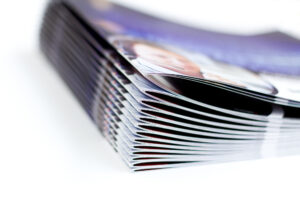 You’ve written the perfect press release. What do you do next?
You’ve written the perfect press release. What do you do next?
Press Release Distribution Services
The most efficient way to maximize the value of your press release is to work with a quality press release distribution service to send it out to a wide audience of targeted journalists. The best ones, like eReleases.com, will distribute it electronically on the PR Newswire press release newswire and email it to select media from their in-house list of 1.7 million journalists.
Using a press release distribution service is the most efficient and cost-effective way to maximize the reach and impact of your press release.
In addition to that, we strongly recommend you send personal story pitches to highly targeted journalists, the ones most likely to do more than just reprint your press release, instead turning it into a story.
How to Send a Press Release in 11 Simple Steps
Unfortunately, most press releases are sent out poorly, so they go right into the trash. Before you start the process of sending press releases, it’s important to know how to submit a press release the right way. Failing to follow the right best practices could do more harm than good. Journalists are likely to ignore your press releases altogether.
Don’t let your press release end up in a trash bin. Instead, use these tips for successful press release submission. With these tips, you can get the PR help you need.
Here are 11 simple steps to sending out your press releases:
Carefully Choose Which Media to Send Your Press Release to
Before you send a press release to the wrong person, it helps to know where to focus your time and energy. Take the time to research media outlets that are relevant to your niche industry or the audience most likely to want to read it. Focusing on your niche will increase your chances of a successful submission.
Sending your release to a niche publication or one that talks to the people in your target audience (for example, the media in your local area), will ensure your content reaches the right target audience, too.
You can research different media outlets, including:
- Radio
- TV
- Newspapers
- Blogs
- Social media
Social media sources can include Twitter lists, Facebook groups, and LinkedIn communities. Consider sharing your content on Medium publications, too.
Finding the right publication can take time and effort. However, it’s an essential step in the process. You want to get your information to as many places as possible.
That way, you can increase the chances that someone will accept your press release submission.
Consider working with a professional press release company, too. They can leverage their existing relationships. With their help, you can ensure your press release reaches the right people.
Identify the Right Journalists
In addition to the right publications, there are oftentimes journalists, bloggers and influencers you may not even be aware of who cover stories like yours. Use search engines to find journalists who have covered similar stories and industries as yours. Look for the name of the author of each specific article (usually from their byline or the about the author section at the bottom of the article.
The list you will compile will be gold – these are journalists who are aware of your story, niche, or industry, and who have shown interest in it by writing on your topic in the past.
Gather Contact Information
Look for clues from the stories you find (for example, some journalists include their email or social media contact information on the stories they publish.) Or go to the media’s website to find the journalist’s contact details. If you can’t find it there, search on that journalist’s name and social media. Your goal is to get specific email addresses for those journalists, bloggers and influencers as opposed to a generic email address like [email protected].
You may need to use a paid media database or working with a professional press release service to get the contact information you need.
-
The Subject Line
The subject line is the first thing a journalist will see when they receive your email. If you don’t have a strong, relevant subject line, they could toss your PR out. Creating a strong subject line will boost your chances of receiving good media coverage.
Otherwise, you’ll end up straight in their trash folder.
Perfecting email subject lines can take time, though. Most press releases don’t have catching, engaging subject lines. While you can use the PR headline as your subject line, it might not encourage people to open your emails.
Journalists want to find press releases that are relevant to their readers. They also look for concise, targeted messages. They won’t want to open an email just to read the headline.
Instead, create a subject line that can spark intrigue. Make sure your subject line teases the content. Keep it clear and concise, too.
Take the time to research who you’re sending your press release submission to. That way, you can write the subject line with the reader in mind.
-
Add a Personalized Greeting
Too many people overlook adding a greeting to their emails. The greeting sets the tone for the entire message.
Avoid using an overly familiar greeting (unless you’ve spoken with that journalist before). Instead, try “Hi (journalist’s name).” Including their name will make the message more personal.
It also shows the journalist you’re not copying and pasting the same message over and over again. Instead, referring to them by name indicates you’re writing the email with them in mind.
Then, think of a way to get the journalist’s attention.
For example, it can help to forge a connection with the journalist. Look at some of their recent work. Check their social media coverage, too.
Compliment the journalist on something specific in their work to show them you know and appreciate that work. Then, tell them why your business chose that journalist.
The journalist will feel appreciated. It can also help your email seem more genuine. Remember, you don’t want it to seem like you’re copying and pasting emails.
-
Develop a Powerful Lead
Your pitch should start with a clear, compelling lead, that summarizes your press release and tells them why they should cover your story. Keep it short and focus on the most crucial, newsworthy information.
Try to stand out within your industry. Journalists receive hundreds of PR pitches every day. If you don’t stand out, they won’t pick your release from the rest.
Think about the unique value you offer their readers. What makes you stand out from the industry? Highlight what makes your business so special.
-
Write the Email Body
Once you’ve grabbed the journalist’s attention, you’ll need to keep it!
Convey the key details of your story in about 150 words. Don’t repeat the press release, that will come later. Instead, show them why this story is newsworthy and of interest to their readers.
Focusing on the value you’re offering them can help you keep their attention.
-
Include Your Press Release
Once you’ve drafted your email, make sure to include the press release. Paste your press release within the email. Don’t include it as an attachment.
Consider adding imagery or other forms of media to your press release, too.
Press releases that include images are 700% more likely to receive coverage than those without. Adding video content can boost your story’s chance of coverage by 1,400%.
A photo or video can engage the audience and add more value to your press release.
-
Close and Provide Contact Information
Keep your closing short, simple, and professional.
Add your content information to the bottom of the mail (after the press release’s boilerplate text). Let them know they can contact you for any additional information. Otherwise, they can’t get in touch about how to proceed with your press release.
Send Your Press Release at the Right Time
The best time to send a press release is mid-week, mid-morning. This helps avoid the busiest time for journalists.
Follow Up
After sending your email, make sure to remain patient. Journalists are busy.
You can send them a follow-up email after three days. If you still don’t get a response, it’s likely your press release isn’t the right fit. Avoid sending more than one follow-up email.
Best Practices in Sending Press Releases
It’s not enough to learn how to send a press release to a journalist. You need to keep these best practices in mind, too. Otherwise, you could make a costly mistake with your email.
1. Avoid Attachments
Remember to paste the Press Release into the body of your email when you send a press release.
Journalists are busy. If you send them a link to your press release on another website, you could waste their time. Instead, offer them ease and convenience by pasting the press release within the email.
They won’t have to worry about visiting a link or waiting for a document to download. Instead, you can make life easier for them. The journalist can transition from reading your pitch to reading your press release
Eliminating unnecessary steps can streamline the process.
2. Avoid Mass Emails
While it’s important to maximize your reach, you shouldn’t send a mass email. If you want to reach multiple outlets, work with a press release company. Otherwise, make sure to send a personal email to each journalist you want to reach.
Sending a mass email will tell journalists you don’t really care where your press release ends up. They might not feel like you’re offering them an exclusive. They might not pick up your press release as a result.
You could end up in a spam folder instead.
3. Keep it Brief
Take the time to trim the fat from your emails. Keep it brief. Remember to keep all text that isn’t the press release to a minimum.
That way, you can ensure the reader focuses on the press release above all else.
Otherwise, fluff can get distracting. The journalist might feel like you’re wasting their time, too.
4. Proofread and Spellcheck
Read through your email three times before pressing send. Otherwise, you could leave the message ridden with spelling and grammatical errors. Spelling issues will tell the journalist you don’t care about the press release at all.
It only takes one spelling mistake to ruin a pitch.
You can use this free press release checklist before you press send, too.
5. Build a Relationship
Once you learn how to submit a press release and it gets picked up, build a relationship with that journalist. Fostering a relationship with each journalist can work to your advantage. You’ll have an easier time getting your press release picked up in the future as a result.
Kick Up Your Coverage: How to Submit a Press Release Successfully
Don’t miss a chance to boost brand awareness. Instead, learn how to submit a press release with these tips. Using this guide, you can increase media coverage for your business and reach a broader audience.
With a little practice or help from a PR service, you can expand your reach and generate more business.
Need help with your next press release submission? We’re happy to lend a hand.
Explore our pricing today to get started.
